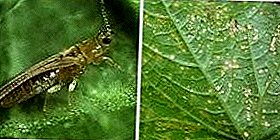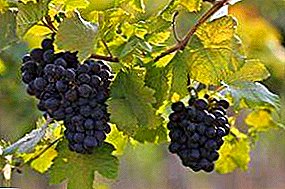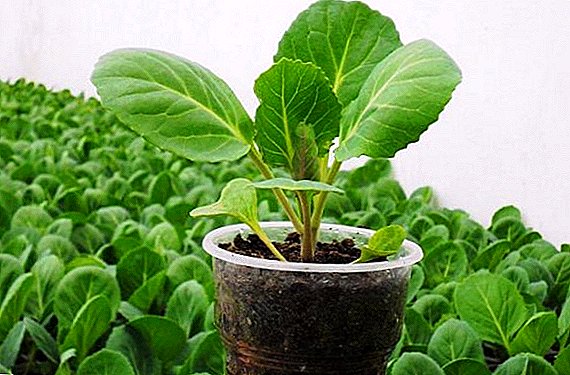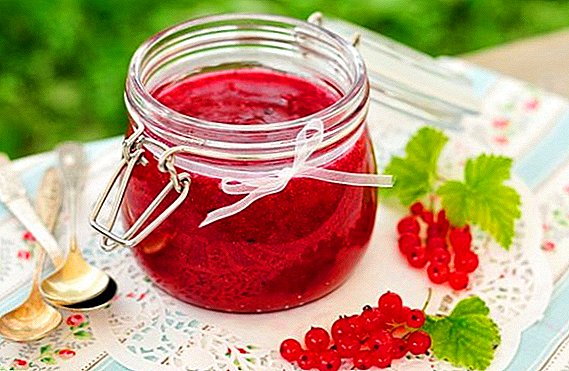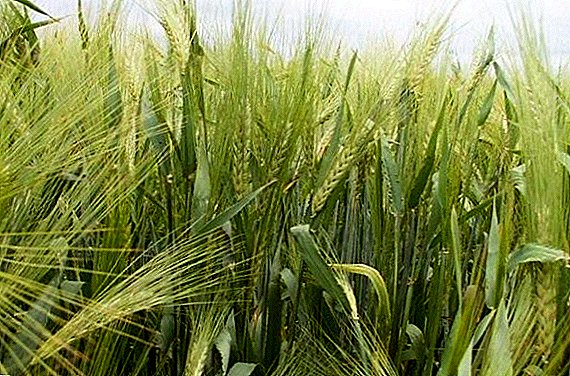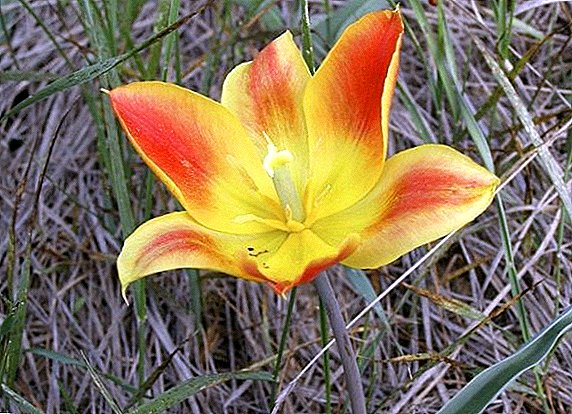 Almost on every household plot there are beautiful flower beds where phlox grow. They can please the eye with its rich and vivid flowering from spring to late autumn. In the family of phlox there are about 60 species, each of which differs from the others in height, shape, and color. Thanks to such differences, with their help, you can create in the garden almost any composition, even one that will bloom continuously. Further in the article we describe in detail the popular perennial varieties of phlox with a photo. Such information will help flower growers to select those types of plants that will allow creating colorful flowerbeds.
Almost on every household plot there are beautiful flower beds where phlox grow. They can please the eye with its rich and vivid flowering from spring to late autumn. In the family of phlox there are about 60 species, each of which differs from the others in height, shape, and color. Thanks to such differences, with their help, you can create in the garden almost any composition, even one that will bloom continuously. Further in the article we describe in detail the popular perennial varieties of phlox with a photo. Such information will help flower growers to select those types of plants that will allow creating colorful flowerbeds.
Subulate
The awl-shaped phlox is able to grow up to 16-18 cm. Thanks to the peculiarities of the structure, it can cover the entire surface of the plot allocated to it. The stem does not have the ability to reach for the sun, which is characteristic of many colors, on the contrary it spreads along the ground.  The plant has a large number of small and sharp leaves that sit tightly on the stem. At the end of the stem is a flower stalk. Usually it is one, but sometimes it happens that there are two or three flower stalks at the same time.
The plant has a large number of small and sharp leaves that sit tightly on the stem. At the end of the stem is a flower stalk. Usually it is one, but sometimes it happens that there are two or three flower stalks at the same time.
As for the inflorescences, the diameter of a single flower is usually about 2.5 cm. They come in pink, purple and white. Exotic colors are also found, but much less often.
Learn more about phlox representatives such as the styloid phlox, the widespread phlox, the paniculate phlox.The flowering period of styloid phlox begins in May and lasts until the first decade of June. Repeated flowering takes effect in August and lasts about a month.
Phloxes are considered evergreens, but among them quite a few winter-hardy. They are perfect for decorating walls, as well as mixborders. Will also be a great addition to the landscape design of Japanese themes.  Before you begin planting phyllose awl, you need to carry out tillage. It is to remove weeds, because they can spoil the overall aesthetics of the flower bed. And after the flowering of phlox, it will become much more difficult to exterminate the weeds.
Before you begin planting phyllose awl, you need to carry out tillage. It is to remove weeds, because they can spoil the overall aesthetics of the flower bed. And after the flowering of phlox, it will become much more difficult to exterminate the weeds.
It is possible to plant and transplant such a flower at almost any time, since it is a perennial. It is advisable to plan such manipulations for the warm season, for example, in the middle of April. Flowers that will be planted during this period will be strong and strong.
When disembarking, it is recommended to keep a distance of 25 cm between plants. It is not difficult to care for these beauties, as they are distinguished by unpretentiousness and noncaprisiness.
Splayed
Spread wide variety of phlox has the form of small bushes, up to 30 cm high. The foliage of this plant is oblong. Under natural conditions, it lives in Canada and in the east of the United States. It grows in wet forest plantations and in the mountains. 
The most popular varieties of phlox splayed are:
- Blue Dreams. The name comes from the color of flowers that have a purple-blue hue. In the center is the dark color "peephole".
- Laphamia. Very dark purple color flowers.
- Clouds of Perfume Possess a lavender smell, flowers lilac color.
- May Breeze. Flowers of large size, lilac-white.
- Variegata The leaves are white and green, the flowers are variegated.
- Sternensplitter. Flowers lilac color, inside there are darker stars.
It will be useful for you to familiarize yourself with the rules of planting and caring for phloxes and with methods of controlling diseases and pests of phloxes.This type of phlox has no special requirements for the soil on which it will grow. And yet it is better to place them on loose soil, which will be good to pass moisture. Also, the land should preferably be slightly acidic.
It is recommended to land on those areas where the groundwater is located no closer than 15 cm from the surface. If this is not possible, then you will have to make beds on an artificial sandy elevation.  Phloxes are well tolerated by both abundant sun and temporary shading. The ideal option is a place where it is sunny in the morning and a shadow falls at noon. Planting flowers should be carried out at a distance of 30 cm from each other.
Phloxes are well tolerated by both abundant sun and temporary shading. The ideal option is a place where it is sunny in the morning and a shadow falls at noon. Planting flowers should be carried out at a distance of 30 cm from each other.
After the flowering period ends, the stems should be cut with a sheath, leaving about 10 cm of shoot. Such manipulations should be carried out annually.
Important! It is necessary to make sure that phlox is not overgrown with weeds, otherwise the harmful plants will sprout through the carpet of phlox and it will be difficult to get rid of them. If this happens, it will be necessary to dig out all the phlox bushes in the fall, divide them and transplant them into a fertilized and cleared space in the garden.Starting from the spring period, when the stems and leaves of plants start active growth, they should be fed with nitrogen-containing components. When the buds begin to form, it will be possible to introduce phosphorus and potassium into the soil.
 After the phloxes bloom, you can fertilize them with phosphorus. You need to be extremely careful with top dressing, because if you allow a surplus of fertilizers, the inflorescences will become more friable, and the stems may generally crack.
After the phloxes bloom, you can fertilize them with phosphorus. You need to be extremely careful with top dressing, because if you allow a surplus of fertilizers, the inflorescences will become more friable, and the stems may generally crack.Propagation of spread phlox is conducted by layering and cuttings. The first option is more simple. It lies in the fact that on the stems crouched to the ground, can form roots. In late spring, loosen the soil near the bush, water it and gently spread the stalks with roots.
Then they need to attach slingshots to the soil and sprinkle a little earth. The soil needs to be regularly moistened and then by the autumn the cuttings will take root and they can be planted by next spring. 
Paniculate
Phlox paniculata is considered to be one of the best flower plants used in the formation of flower beds on the site. It is not capricious to the habitat, it endures a decrease in temperature, and still has lush motley colored inflorescences and an incredible aroma.
The color of phloxes of this species is unusually wide: They are purple, carmine, scarlet, dark purple and are complemented with a different color with dots, eyes, rims, etc. A flower in diameter can be either 2.5 cm or 4 cm, depending on varieties.
At the current time such a bush plant has many subspecies (several thousand), thanks to the constant selection work. The paniculate phlox propagates in a vegetative way by almost all parts.  The plant has an original appearance and extraordinary beauty. It is possible to use inflorescences not only in landscape design, but also as an improvement of flower beds. The most common plant varieties are:
The plant has an original appearance and extraordinary beauty. It is possible to use inflorescences not only in landscape design, but also as an improvement of flower beds. The most common plant varieties are:
- Phlox paniculata success;
- Red riding is thin;
- Sherbet Cocktail;
- Traviata;
- Blue paradise;
- Alina;
- Tequila Sunrise;
- Europe;
- Forget-me-not;
- King;
- Gzhel "and many others.
But planting flowers at the end of summer or even in the first week of September is also allowed.  The flowering period of phlox of this species is quite long. It begins in spring and ends in autumn, but during this time there is a monthly break in flowering, which occurs in July.
The flowering period of phlox of this species is quite long. It begins in spring and ends in autumn, but during this time there is a monthly break in flowering, which occurs in July.
Propagation of paniculate phlox is carried out in a number of ways:
- leaf-cuttings;
- vertical shoots;
- green cutting.
Perennial plants such as perennial delphiniums, incarvillea, peonies, dichondra, multileaf lupine, licoris, lily of the valley, astrantia, Thuringia laurel, many flowers, stapelia, armeria, chionodoxa, chukhrat, can decorate your flowerbed.
Drummond
The predominant number of perennial phloxes are tall, and therefore they are difficult to use in the formation of living borders or rock gardens. But the view of Drummond just can not grow above 30-35 cm  The diameter of the flowers is 2 cm, but they are collected in inflorescences, and therefore seem large and voluminous. Flowering lasts a very long time, from June to mid-autumn.
The diameter of the flowers is 2 cm, but they are collected in inflorescences, and therefore seem large and voluminous. Flowering lasts a very long time, from June to mid-autumn.
Varieties of plants differ in the form of flowers, petals and, of course, colors. The most popular are:
- Buttons. This is a two-color phlox, the flowers of which have a peephole inside. They tolerate drought and do not grow above 20 cm.
- Milky Way and Star Lace. Prized for the peculiar shape of the flowers, which resembles an asterisk.
- Strawberries with cream and Chanel. Have lush terry flowers.
- Tetra Riesen and Grandiflora. Varieties with large flowers (up to 4 cm in diameter) withstand frosts.
 A sharp drop in temperature has a negative effect only on the petals of the flowers, and all other aboveground parts will still be green.
A sharp drop in temperature has a negative effect only on the petals of the flowers, and all other aboveground parts will still be green.As for the soil, there are important nuances that should be emphasized. Drummond do not like too heavy soil, and too light, sandy. Heavy soil will accumulate an excessive amount of moisture, which can provoke the defeat of the root system of phlox rot.
Too light land, on the contrary, cannot retain moisture, in the summer it will overheat, which will also have a very negative effect on the roots of the limes. So, while preparing the garden plot for planting phlox, you should adjust the soil, bringing the necessary components into it (humus, peat, humus, etc.).  The planting of this type of plant can be carried out in two ways: seedlings or seeds at once. If you initially grow seedlings at home, this will significantly speed up the time of the onset of flowering, but in cases where you do not want to mess around with flowers for a long time, you can simply sow the purchased seeds directly into the soil.
The planting of this type of plant can be carried out in two ways: seedlings or seeds at once. If you initially grow seedlings at home, this will significantly speed up the time of the onset of flowering, but in cases where you do not want to mess around with flowers for a long time, you can simply sow the purchased seeds directly into the soil.
Did you know? Phlox "Drummond" was introduced to Europe from Texas. "Phlox" literally translates as "flame", and "drummondii" comes from the name of the traveler from England, Henry Drummond. It was this man who was the first to send phlox seeds to England from the USA, and this opened up a new flower plant to the Europeans.
Spotted
The spotted phlox is considered to be a close relative of the paniculate species. In the people it is often called pyramidal, which is explained quite simply: the spots on the stems of the plant can hardly be distinguished, but the peculiar shape of the inflorescences, which looks like a pyramid, catches the eye immediately.
Spotted phlox grows in its natural environment on the banks of rivers, meadows, and even in wet low forests. Homeland of this species is considered the eastern regions of the United States.  It is a tall ornamental herb that can reach a height of 100 cm. Its stems are strong, straight and numerous. The leaves are small, narrow, dense and shiny, have a opposite arrangement. The flowers are fragrant and have a purple or light purple color.
It is a tall ornamental herb that can reach a height of 100 cm. Its stems are strong, straight and numerous. The leaves are small, narrow, dense and shiny, have a opposite arrangement. The flowers are fragrant and have a purple or light purple color.
The diameter of one flower is 2.5-3 cm. The flowering period depends not only on the variety, but also on the growing conditions. On average, the plant begins to bloom in June or July.
At the current time on sale you can find phlox spotted vila, which on the stems do not have speckles. Also, there are flowers of white and pink color. This species is very common in floriculture because it is great for forming flower beds, compositions, mixborders, etc.  The phlox of the spotted species tolerates the winter cold well, it also steadfastly holds against pests and diseases. The plant loves moisture, grows poorly in dry areas. As for the requirements for the soil, the soil needs loose, light, loamy, slightly acid, permeable and non-saline.
The phlox of the spotted species tolerates the winter cold well, it also steadfastly holds against pests and diseases. The plant loves moisture, grows poorly in dry areas. As for the requirements for the soil, the soil needs loose, light, loamy, slightly acid, permeable and non-saline.
Paniculate phlox has relatively few varieties, but breeders are still working to expand the range of this ornamental plant. In addition, this species is often used to hybridize new cultivated phlox. The most popular and common varieties are as follows:
- Natasha. The variety is universal, the bushes grow up to 70 cm. The flowers are white in color, they have a light strip of crimson. The name of the variety was given in honor of Natalia Lunina, who was the curator of perennial plant varieties in the Botanical Garden.
- Schneelawine (Schneelavavin). Plant height from 50 cm and above. Stems are strong and grow very quickly. Small flowers, snow-white in color, collected in large cylindrical inflorescences. The considered grade is characterized by high rates of winter hardiness.
- Rosalinde (Rosalind). Perhaps this is one of the most tall grades of phlox. Plants are large, up to 130 cm tall, stems are numerous, powerful and durable. The flowers are pink or pink-purple, are collected in inflorescences.
 The division is best done in early spring, but it is also allowed to carry out these manipulations in summer and autumn. As for grafting, it is carried out at the end of May or in the middle of July.
The division is best done in early spring, but it is also allowed to carry out these manipulations in summer and autumn. As for grafting, it is carried out at the end of May or in the middle of July.For spring cutting, the whole stem should be used; for the summer, only its upper part can be taken.
Multicolor
The phlox of a multi-flowered species is a prominent representative of the Sinyukhov family. It is believed that these flowers originated from North America. In the natural environment lives in the mountains and is one of the creeping species. Despite winter hardiness and carelessness in the care, this plant is rarely used in culture.
The considered species of herbaceous plants grows no higher than 15 cm. Stalks creeping and lie on the ground. In the process of growth, they are capable of forming thick, but at the same time compact, dense pads or turfs. The leaves are bare and shiny, have a rich green color.  They are usually bundled and slightly pointed at the tips. The length of the leaves - about 2, 5 cm. Flowers are very much, they are white, blue, pink and purple. In some varieties of flowers of a single type, while others are collected in inflorescences. The flowering period begins in May and lasts approximately 25-30 days.
They are usually bundled and slightly pointed at the tips. The length of the leaves - about 2, 5 cm. Flowers are very much, they are white, blue, pink and purple. In some varieties of flowers of a single type, while others are collected in inflorescences. The flowering period begins in May and lasts approximately 25-30 days.
This species is extremely winter-hardy, it is also resistant to all sorts of diseases and pests. Flowers look great in rock gardens and rockeries, no less harmonious look also in flowerpots. Such phloxes like nutritious and moist earthy areas.
As for lighting, the best option would be diffused light. You can plant this culture in the sun, so it will bloom more abundantly, but at the same time not for long, therefore it is better to still give preference to the openwork shade.  Like many other members of the genus, the multi-flowered phlox does not like penetrating winds and drafts. So to provide him with a calm place on the site is extremely important. Caring for such a flower will be quite standard.
Like many other members of the genus, the multi-flowered phlox does not like penetrating winds and drafts. So to provide him with a calm place on the site is extremely important. Caring for such a flower will be quite standard.
It will be necessary to periodically water the soil, apply fertilizer, as well as carry out preventive work aimed at diseases and pests. All of the above manipulations from the grower will take a minimum amount of time.
The plant in question under adverse growth conditions and improper care may be affected by viral or fungal diseases. These include leaf curliness, spotting and variegation.
It is necessary to understand that such diseases are not amenable to treatment, so the gardener's task will be to prevent their occurrence.  Speaking about the diseases of fungal origin, one should first of all recall powdery mildew. It affects phlox usually in late August. Such a disease is manifested by white bloom on the foliage, which gradually increases in volume and provokes the drying of the green parts of the plant.
Speaking about the diseases of fungal origin, one should first of all recall powdery mildew. It affects phlox usually in late August. Such a disease is manifested by white bloom on the foliage, which gradually increases in volume and provokes the drying of the green parts of the plant.
Powdery mildew can be fought with the help of fungicides and preparations containing copper.
Pests that can threaten a multi-flowered phlox are slugs, spider mites, nematodes, and earwigs. The most common are slugs and nematodes.
Preventive work consists in timely cleaning of the site, as well as keeping the necessary agricultural machinery.  Not the last role in the cultivation of these flowers are feeding. They directly influence the development and growth of the plant, the abundance of flowers and wintering. It is recommended to fertilize the soil from 3 to 5 times per season, the exact volumes will depend on the nutritional level of the soil.
Not the last role in the cultivation of these flowers are feeding. They directly influence the development and growth of the plant, the abundance of flowers and wintering. It is recommended to fertilize the soil from 3 to 5 times per season, the exact volumes will depend on the nutritional level of the soil.
So, in early spring, the site can be fertilized with components containing nitrogen, which must be diluted in water. In the first decade of May, a mullein can be poured under the bushes. When budding begins, a good option would be to use a liquid form of potash supplements.
Dwarf
The dwarf phlox grows in natural conditions on the prairies, as well as on hills, where the soil is especially dry. Большое распространение имеет в США, а именно в штатах Аризона, Нью-Мексико, Техас, Колорадо и т. п.
Это низкорослые стелющиеся многолетние флоксы, которые имеют ряд требований к условиям произрастания, из-за чего не очень популярны среди садоводов.  Карликовый флокс способен вырастать не выше 30 см. Стебли у него восходящие и ярко-зеленые. In the course of growth, this plant can form dense, but at the same time attractive ferns, over which large flowers bloom.
Карликовый флокс способен вырастать не выше 30 см. Стебли у него восходящие и ярко-зеленые. In the course of growth, this plant can form dense, but at the same time attractive ferns, over which large flowers bloom.
The flowers themselves are fragrant and can be of different colors: lilac, purple, white, pink, yellow, etc.
Did you know? Dwarf phlox is one of those species of this plant that can please a florist with a flowering of yellow color, and there are very few of these, as we know. However, it should be noted that such an unusual yellow pigment can be destroyed under the influence of bright sunlight. But many researchers are still doing selection work in order to get phlox with a more resistant "sunny" color.This type of herb is extremely winter hardy, rarely gets sick and is affected by pests. Breeding can be carried out both vegetatively and by seed. But the latter method is considered more effective.
 Like a number of other members of the genus, the dwarf species will grow better on nutritious, loose and permeable soils. Strongly dry, dense, over-wetted or marshy soils are categorically not suitable.
Like a number of other members of the genus, the dwarf species will grow better on nutritious, loose and permeable soils. Strongly dry, dense, over-wetted or marshy soils are categorically not suitable.In strongly acidic soil, a dwarf phlox can be grown, but only if the liming of the site is carried out.
Planting flowers can be carried out both in the spring and in the autumn periods. As practice shows, plants that were planted in spring take root better. The roots of the dwarf species are shallow, they go into the ground by about 25-35 cm, so that the hole for planting can be done only on a spade bayonet.
More abundant flowering will be if phlox planted in the open area for the sun. But if there is a desire to get a longer flowering period, it is better to choose a place with diffused lighting. 
Forked
The phloxes of bifurcated species can be seen under natural conditions on hilly and stony areas, and they are also found on the prairies. This type is actively used by gardeners and has a number of very attractive varieties.
The stems of the bifurcated plant species are hard and tough, they are slightly pubescent and upright. The leaves are narrow, linear type, no longer than 4-5 cm. The flowers are small, graceful, can be purple, purple, blue, white, as well as mixed type of color. On average, the diameter of a single flower reaches 25 mm.
The considered species is considered early flowering. The flowering phase begins in May and may last for about a month. The duration of such a phase depends on the location of the plant, as well as on climate conditions. 
Currently, the most popular varieties of phlox bifurcated are the following:
- Blue Form;
- Petticoat (Petticoat);
- Colving White;
- Starbrite.
Important! If the florist conducts cuttings in the first days of July, then only the upper part should be taken from the stem, since at this stage the plant will be already woody.Such manipulations should be carried out in the last decade of May, or in the first days of June, and cuttings can also be done at the end of summer.

Siberian
Siberian phlox is a very rare species. He was even listed in the Red Book of the Republic of Bashkortostan. Natural habitats are river valleys, mountain slopes, meadows, steppes and forest edges. You can find a plant in Siberia, Mongolia and the Southern Urals.
Under natural conditions, most often reproduces vegetatively, less often - with seeds. The active cultivation of the Siberian phloxes engaged botanical gardens.
In the process of growth, perennial forms numerous direct shoots of the pubescent type, which can reach a height of 15-20 cm. The foliage is green and linear and is located on the stems oppositely.  Flowers can be purple, pink and lilac. They are small in size and often collected in inflorescences paniculate type.
Flowers can be purple, pink and lilac. They are small in size and often collected in inflorescences paniculate type.
Important! A distinctive feature of the Siberian phlox species is that it is used not only as ornamental plants, but also used in traditional medicine. This is due to the fact that the green part, as well as the petals of this flower contain a large number of anthocyanins and other extremely useful elements. The plant can be used in the treatment of diseases of the respiratory system, as well as in order to combat insomnia. Once, Siberian phlox infusions were recommended to drink to soothe because of fright.How abundant and colorful flowering will depend on proper and regular care of the plant. It is especially important to pay attention to watering the soil. In its natural environment, the Siberian phlox can grow without problems even on stony and dry areas, but this attitude will not work for the cultural appearance of this flower.
 Watering should be regular, systematic. At the same time, it is necessary to monitor that the soil under the phloxes is constantly slightly damp, but at the same time not overwetted. It is better to water the plants in the evening, using warmly separated water. After watering, the ground should be sneak out.
Watering should be regular, systematic. At the same time, it is necessary to monitor that the soil under the phloxes is constantly slightly damp, but at the same time not overwetted. It is better to water the plants in the evening, using warmly separated water. After watering, the ground should be sneak out.When the first night frosts come, it will be necessary to prune this flower culture. It is necessary to cut the green mass with scissors or with a special trimmer, leaving 5 cm sprouts over the soil. Trimming should be removed from the area and burned.
Douglas
Douglas phlox are native to North America. In nature, live on slopes and rocky mountains, as well as on areas with dry soil. Outwardly very similar to the styloid form of phlox.
Did you know? The plant got its name in honor of the man who in 1927 discovered this type of phlox in the mountains. His name was David Douglas.This flower is short, its maximum height can be about 10 cm. Its stems are dense, and the foliage is dark and hard. The flowers are relatively small, sessile, can be different colors from purple, red and purple, to lilac, pink and white.
 The species in question prefers wet and friable areas, the soil should be nutritious and non-saline. You should not over-feed and fertilize the soil under the plant, since the excess of such substances will affect the abundant growth of green mass.
The species in question prefers wet and friable areas, the soil should be nutritious and non-saline. You should not over-feed and fertilize the soil under the plant, since the excess of such substances will affect the abundant growth of green mass.Douglas phloxes need good lighting, places with open light are also suitable. Too dark areas will be disastrous.
This species grows somewhat slower than its relatives, but for the current day there are varieties that are growing very rapidly. There are many varieties, more than 150 varieties are widely used by growers to decorate personal plots. The most popular ones are:
- Crackerjack;
- Boothman's Variety (Buffmans Wariet);
- Karakulka (Karakulka);
- Lilac Cloud (Lilac Cloud);
- Zigeuner Blut (Zigner Blat);
- Eva (Eva);
- Red Admiral (Red Admiral);
- Waterloo;
- White Admiral (White Admiral).
 Summing up, it is worth noting that phlox is represented by a variety of species that have both a number of common characteristics and a certain number of distinctive features. To grow a flowering plant abundantly, it is necessary to provide them with proper care and then the result will not take long.
Summing up, it is worth noting that phlox is represented by a variety of species that have both a number of common characteristics and a certain number of distinctive features. To grow a flowering plant abundantly, it is necessary to provide them with proper care and then the result will not take long.

